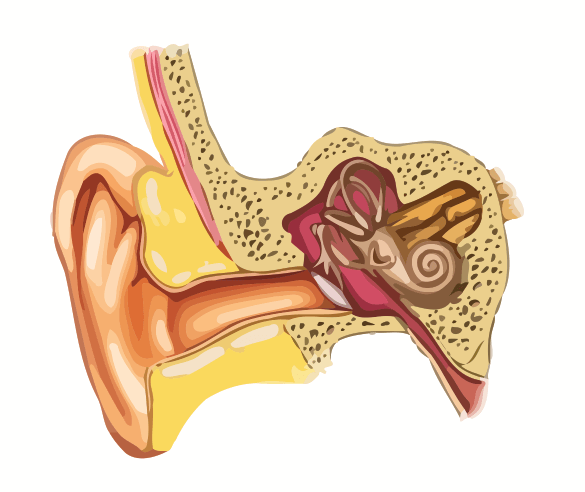

In contrast to perception, which explicitly includes the level of awareness, sensory sensations do not usually reach the level of conscious awareness. Examples include the rubber hand illusion, reported by Matthew Botvinick and Jonathan Cohen, and an altering of perceived size of a single body segment evoked by the vibration of related tendons, reported by Jim Lackner. Multisensory integration is particularly crucial for the emergence of a coherent body scheme, and some empirical findings illustrate the continuous impact of intersensory adjustments. Nevertheless visual input is integrated into the body scheme in a mostly unconscious manner, as shown by Michael Graziano and coauthors at the end of the 20th and beginning of the 21st century, and is further modulated by auditory input. A topographic organization of the cortical projection pattern can also be found for the visual system in the primary visual cortex as well as a tonotopy pattern in the primary auditory cortex, altogether known as sensory maps.
#AUDITORY SENSES SKIN#
Neighboring cutaneous receptive fields from the human skin are represented also in adjacent cortical fields, leading to a somatotopic organization of the somatosensory cortex in the form of a homunculus. Receptive fields have been found for neurons of the somatosensory, the visual, and the auditory systems. The region of skin from which a tactile stimulus will alter the firing rate of a receptor neuron is called the receptive field. The organization of the somatosensory representation-as a main element of the body scheme- is related to the localization of a distinct area on the body surface. Patrick Haggard and Daniel Wolpert distinguished between a body scheme and a body image much more dependent on conscious visual representations. This body representation is broadly involved into spatial sensorimotor processing of skilled action and it is continuously updated with ongoing movements.

Information about the physical self from different modalities-tactile, proprioceptive and vestibular information-is integrated within a multisensory supramodal coherent representation, the body scheme. Though vision is often understood as the most important sensory modality concerning the regulation of actions in sports, it is also crucial to realize that vision only can work in relation to the perceived self. Nearly all kinds of goal-directed actions in sports rely on currently updated information about the environment as well as about one’s own posture and kinesthesia.

Vision is discussed more in depth in a separate entry, whereas the roles of hearing, kinesthesia, and touch are discussed more fully in this entry. Vision, hearing, kinesthesia, and touch serve as initial functions for generating information within the central nervous system (CNS), which in turn contributes sensations and bottom-up input to perception and up to higher cognition. Besides stimulus modality, these are intensity, duration, and spatial location. Each system encodes four essential features of a stimulus. Receptors of each sensory system are sensitive to a distinct kind of energy, like the hair cells of the inner ear to sound energy and the mechanoreceptors of the tactile system to mechanical energy or the visual receptors to electromagnetic energy.

Sensory systems are the peripheral parts of the nervous system responsible for the transformation of physical stimuli into a neural code.


 0 kommentar(er)
0 kommentar(er)
